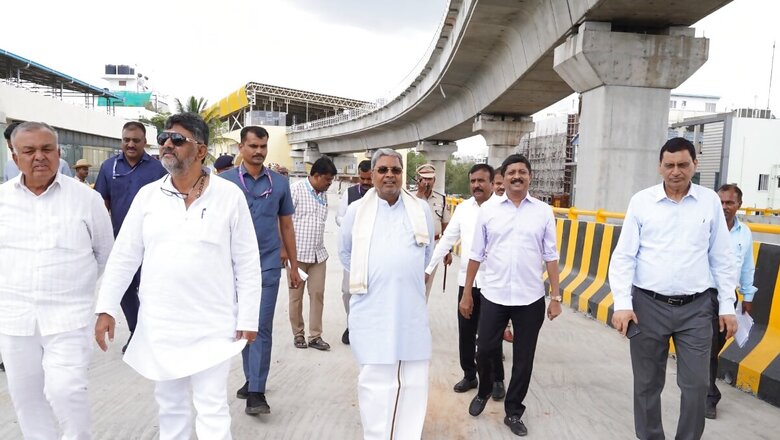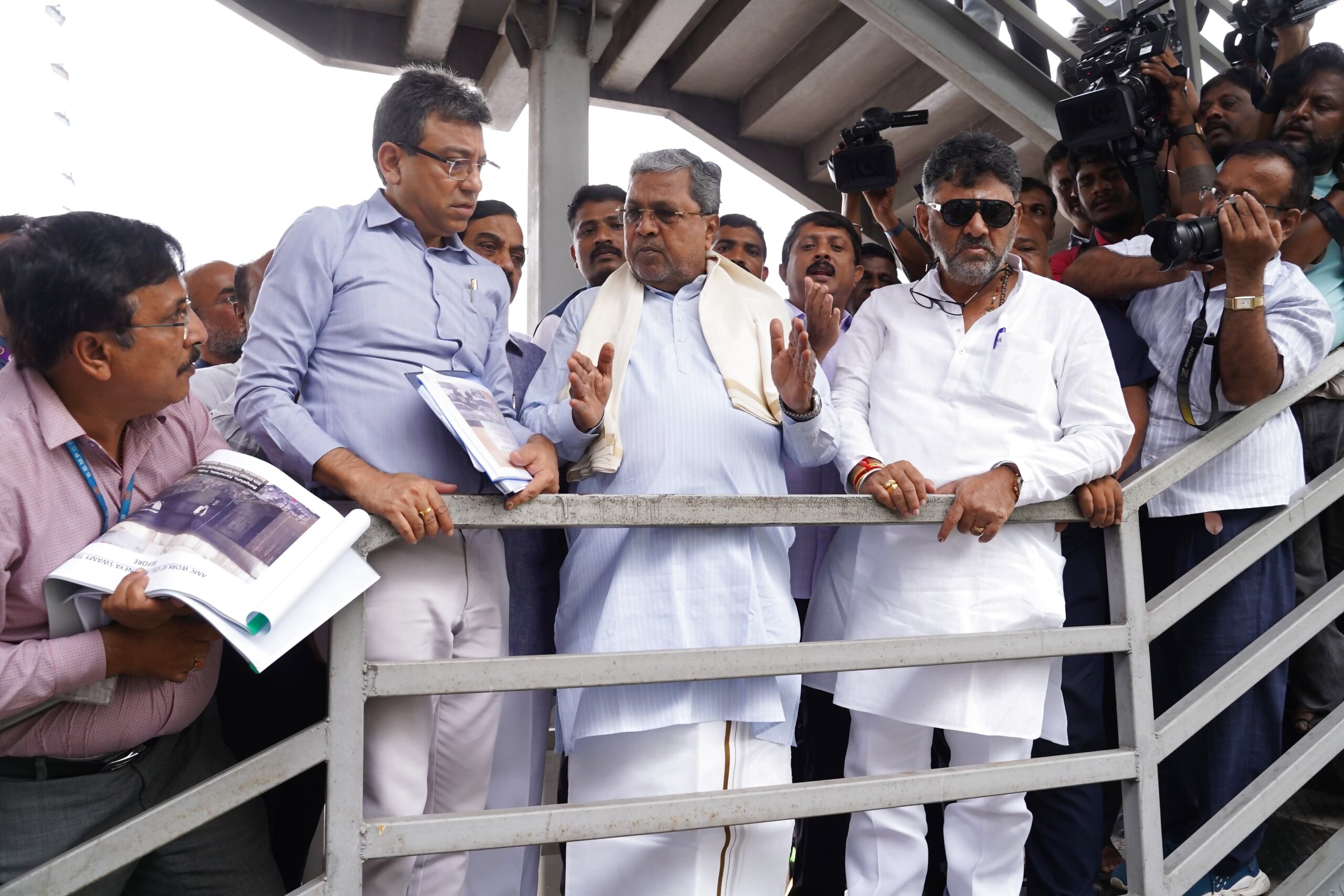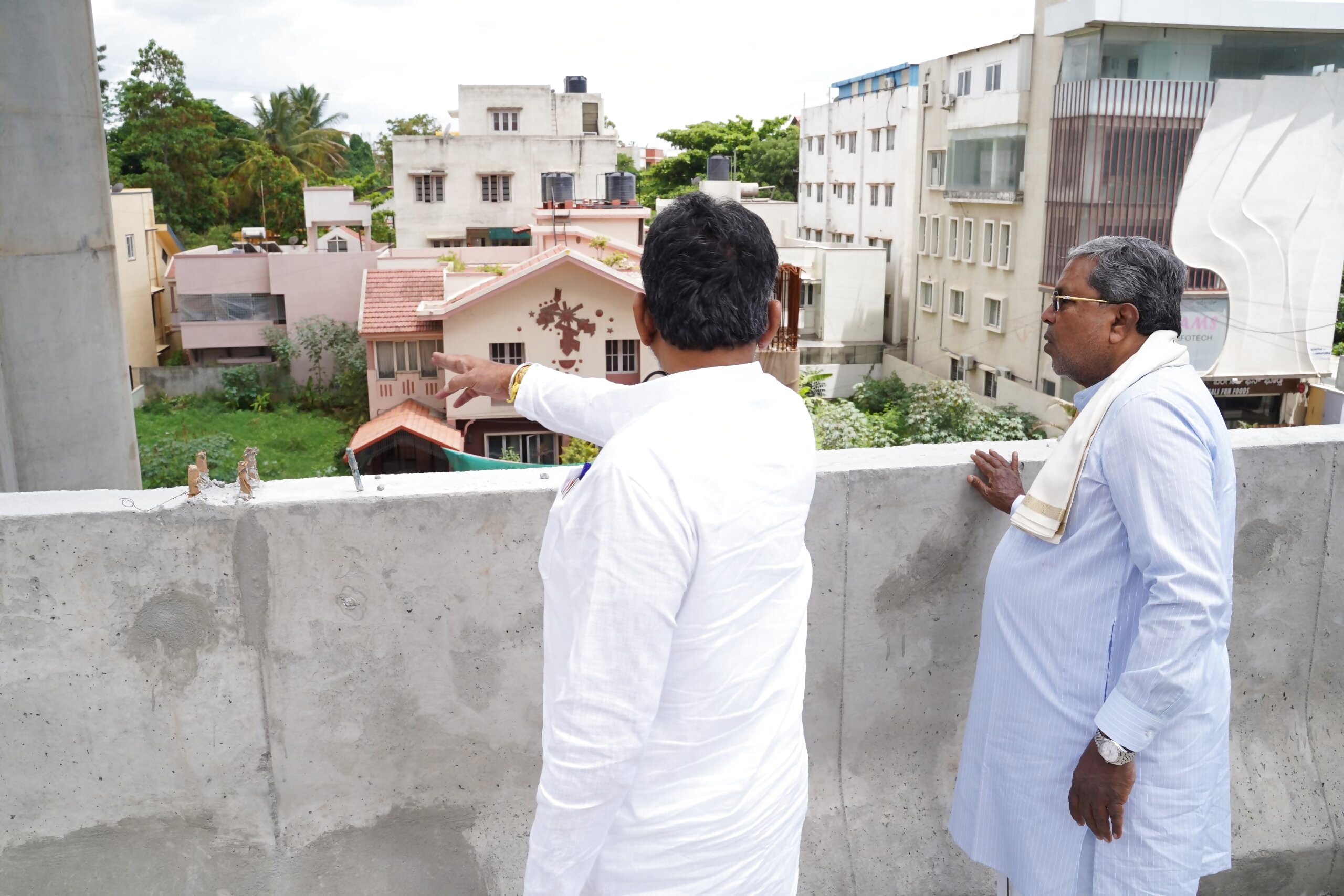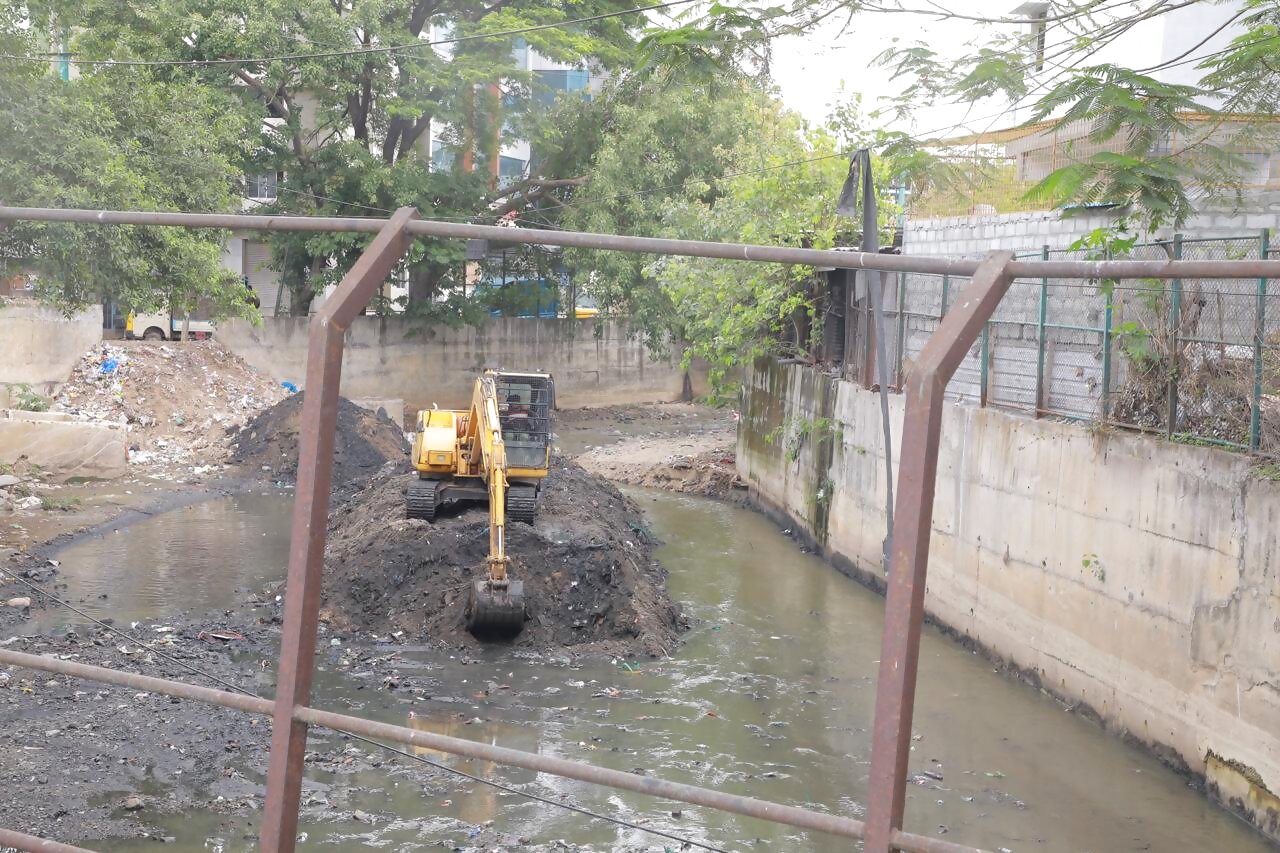
views
In an effort to shake off the tag of ‘flood city’ from Bengaluru, Karnataka Chief Minister Siddaramaiah and Deputy Chief Minister DK Shivakumar decided to take the matter into their hands and go on city rounds to assess the city’s flood preparedness. Bengaluru, like the rest of Karnataka, which had been facing severe drought and water scarcity, may have found some relief with the ongoing showers since mid-May, but is now faced with another problem: waterlogging during the monsoons.
“Our visit is a precautionary measure, and we have asked all the work to be finished before the monsoons set in June,” announced the CM, spending three and a half hours on the roads inspecting various pain points of the city prone to flooding during the monsoons. Both the CM and DCM visited flood-prone areas in South and Southeast Bengaluru.
The Bruhat Bengaluru Mahanagara Palike (BBMP), tasked with maintaining and providing city-based infrastructure and sanitation, is yet to conduct elections for its 198 wards, an election delayed by nearly four years. On the question of when the BBMP elections would be held, Siddaramaiah reacted, “We will think about it after the model code of conduct is lifted.”
BBMP Chief Commissioner Tushar Girinath and other senior civic officials who accompanied the CM-DCM team explained the problem of silted rajakaluves or stormwater drains, making areas vulnerable to flooding.
Bengaluru has grappled with blocked and silted stormwater drains leading to flooding across the city. The issue of flooding has always been a political blame game between parties. Explaining the issue, Siddaramaiah said that there were 860 km of stormwater drains or rajakaluves in Bangalore. Stating that in his previous term as CM between 2013-18, he had cleared 491 km of encroachments, but the previous government (BJP) gave the tender for the remaining 195 km only in January 2023, and the work would be completed only by 2025.

“If they had finished the work early, we would not have faced this situation today,” said the Karnataka CM, adding that they had sought a loan of Rs 2,000 crore from the World Bank to complete the pending 174 km long SWD work.
During his visit to Vijayanagara, near Bengaluru’s famous Gali Anjaneya temple, which sees heavy waterlogging during the rains, the BBMP chief explained that while efforts are being made to keep the drains clean, there is also a need to construct a canal to help the water flow directly into the stormwater drains. At the location, a visibly angry CM issued a warning to the Chief engineer of the BBMP to complete the work or face suspension.
“This project needs to be taken at an estimated cost of Rs 11.5 crore for flood control,” explained Girinath to the CM, who instructed to complete it before the month end.

“The previous BJP government had proposed to spend Rs 18,000 crores for this project. There are nearly 12 civil cases pending in courts to clear encroachments; about 12.15 kms are stuck in civil cases,” the CM later told the media in an interaction.
During the delegation’s stop at South Bengaluru, where the city’s first double-decker flyover and metro station are under construction, the CM instructed that a jack well be built in the area to pump out stagnant water during the floods into the Madiwala lake.
Speaking on the issue of lake conservation, the government said that Bengaluru, which has a population of over 1 crore and more than 400 lakes or tanks, is faced with a major hurdle – many of them have been closed due to encroachments or are silted.
“Where there are catchment areas, the encroachments will be removed at the earliest,” assured Siddaramaiah.
The Potholes Menace
Another major issue plaguing Bengaluru has been potholes, and the CM announced that a special cell has been set up by his government to monitor and fill up potholes as and when they occur.
“There are 5500 potholes in the city; we have done a census of the potholes in all the BBMP wards. There are arterial and sub-arterial roads, and they have around 557 potholes. There are 67 bad stretches in Bengaluru,” said Siddaramaiah, adding that his government is looking at finding a permanent solution to the pothole problem in the city.
Photos and videos of traffic personnel or citizens filling up potholes have often surfaced on social media, putting the civic body in a spot.
“I have given strict instructions to the BBMP Commissioner and administrator to resolve the pothole problem. We are looking for a permanent solution to maintain all the roads and fill up all potholes as soon as they occur. I have made a special cell for this to ensure that there are no floods and water entering homes. The government will take care of the drainage. I have given strict instructions to engineers and warned them that they will be made responsible if water enters people’s homes,” said the CM.
One who should be going around such rounds is the Mayor of the city, not the CM or DCM, who are administrators of the state and not just Bengaluru, feels urban expert and civic activist Srinivas Alavilli, adding that the effort was more symbolic rather than a systemic fundamental change in the way things are functioning.
Alavilli called the counting of potholes a futile exercise and suggested that instead of putting a number to them, the government should find out why the potholes occur and build structures that do not allow them.
“There are 15,000 kms of roads in Bengaluru, and how can one find out the number of potholes? Even God won’t know! Whenever they come with a number, they collect this information for the courts. It is a complicated conversation. We need to discuss not how many are there but why they come up,” said the expert. Alavilli believes that white topping of roads, even though not environmentally friendly, has to a large extent helped in reducing potholes on roads and also flooding in those areas of Bengaluru.
“By filling the pothole as soon as it appears is like putting a band-aid on and not addressing the root cause,” the urban expert added, referring to the CM’s announcement to fill them up as they appear.
Urbanisation Responsible For Floods in Bengaluru
According to recent data collected by the Indian Meteorological Department (IMD) between 1969 and 2019, among other cities, Bengaluru is the most vulnerable to floods. According to their data, in a period of over 50 years, Bengaluru urban has recorded 73 floods, while the Bengaluru rural parts have recorded a close 71 floods. The landlocked city has seen more floods than coastal areas of Dakshina Kannada (47 floods) and Uttara Kannada (40 floods).

IMD officials have attributed this phenomenon of flash floods to increased concretisation and rapid urbanisation with no attention to drainage or illegal encroachments.
The IISC scientists, as part of their effort, map the transformation of Bengaluru and share information on the public space on the extent of unplanned urbanisation and concretisation that is taking a toll on the citizens. A startling report documented by the Indian Institute of Science (IISc) scientists shows that close to 90 per cent of the IT capital is now a concrete jungle and there has been a sharp decline in the water spread in the city.
Prof TV Ramachandra of IISc’s Centre for Ecological Sciences told News18 in an earlier interview that in 1973, there was 2,324 hectares of water spread which, as of 2023, stands at 696 hectares.
“More than 98 percent of our lakes are encroached, and many of them are fed with untreated sewage water and industrial effluents that not only affect the wildlife and plant life but also contaminate the groundwater, putting all of us at risk,’ Prof Ramachandra said.
Explore in-depth coverage of Lok Sabha Election 2024 Schedule, Voter Turnout, Upcoming Phase And Much More At News18 Website















Comments
0 comment